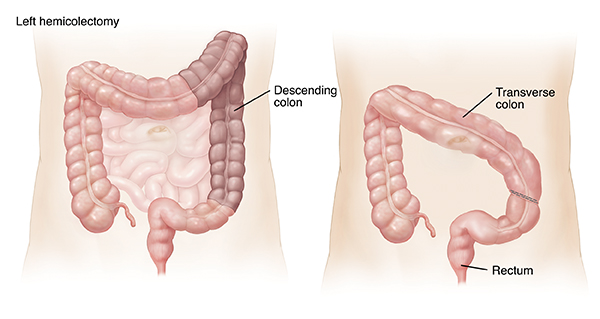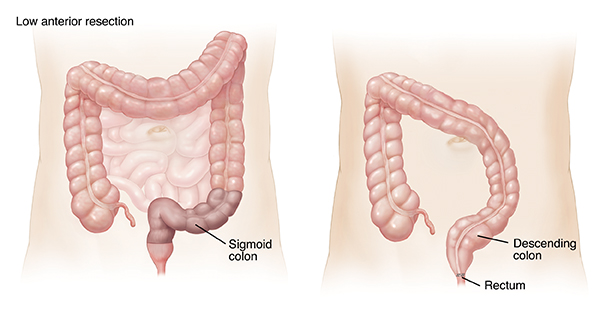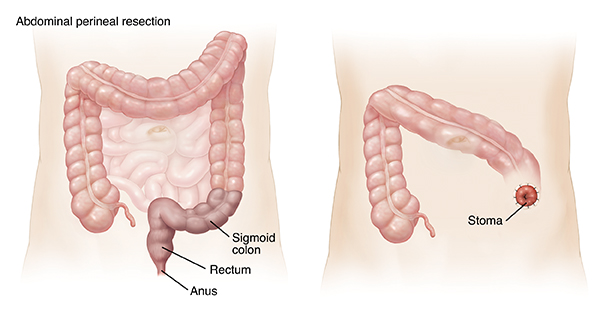Types of Colon Resections
In colon resection, a part of the colon is taken out (resected) during surgery. The most common types of colorectal resection are listed below. Your surgeon will explain the one that is right for you.





Colostomy
After certain types of surgery, the colon and rectum may need to be kept clear of stool while they heal. In other cases, the rectum has been taken out. Or it can’t be reconnected to the rest of the colon. In either case, you need a colostomy. This makes a new opening in the belly (abdomen) so waste can leave the body. You may need the new opening for a short time, or permanently. If you had a colostomy during your surgery, your healthcare providers will help you learn how to care for it.